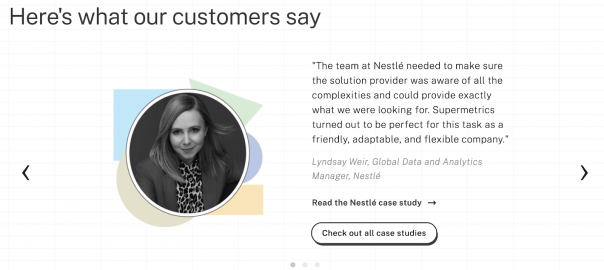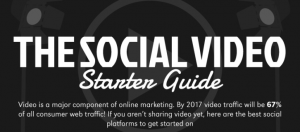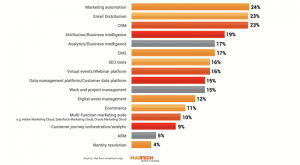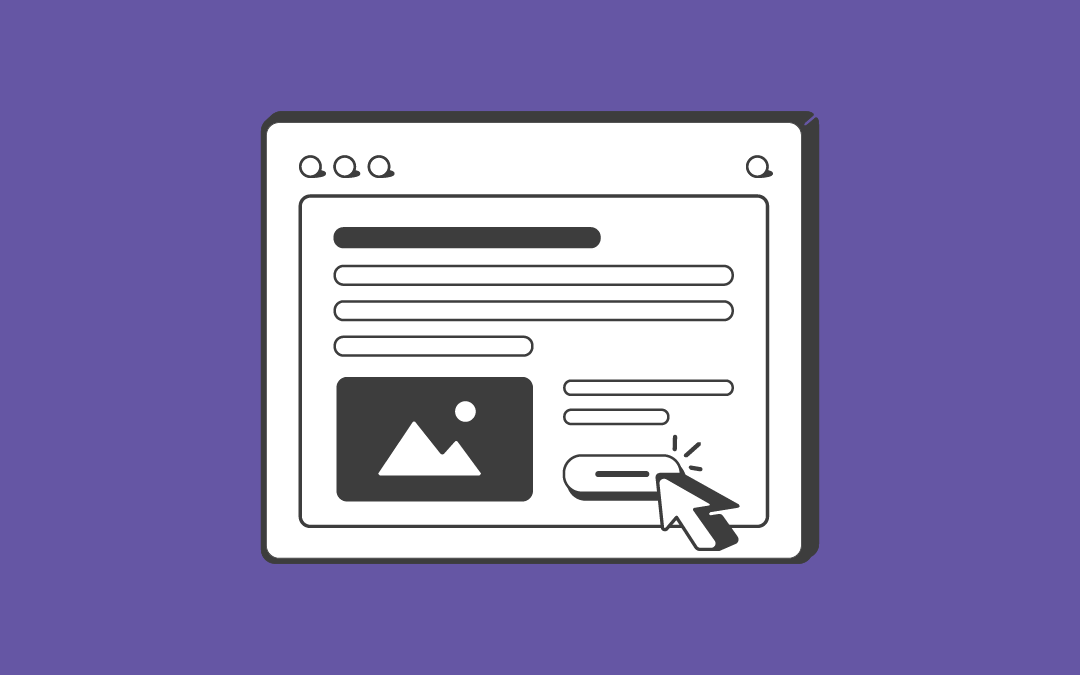
Chances are your company makes use of both SEO and PPC to maximize its sales. While pay-per-click advertising doesn’t directly affect your ranking in the organic search results, it still has an indirect impact.
In this article, I’ll introduce those indirect effects and evaluate what they mean for your landing page experience. Then, I’ll share tips for improving that experience for your visitors—no matter how they landed on your page, be it through an ad or using the organic route.
Same landing page for SEO and PPC
SEO is all about relevant content that matches the visitor’s intent, whereas PPC is more strictly geared toward conversion optimization. To optimize your organic traffic, you need detailed information that’s usually less transactional than the content for paid traffic. A landing page crafted specifically for PPC is more likely to answer potential objections visitors might have prior to their conversion.
It’s not uncommon for a business to have the same landing page for SEO and PPC. And if that’s the case, then that one landing page and its features impact both traffic sources. But optimization is still somewhat different for organic and paid traffic. So, try to focus on the overall landing page experience and the factors that can improve traffic from both channels.
The positioning of your ad in the paid search results depends on multiple factors such as bid amount and ad quality score that includes relevance, click-through rate, and landing page experience. For organic results, ranking is mostly about the number and quality of backlinks and the quality of your content and its relevance to the targeted keywords.
Landing page experience measures how well your page meets visitors’ expectations. It’s one of the key considerations for both PageRank and Ad Rank. So, if your page serves both ad traffic and organic traffic, it needs to be optimized in a way that satisfies them both.
What do PPC experts say on this?
Sofie Segercrantz, Supermetrics’ Performance Marketing Lead, says:
“One of the most central parts of modern search engines is getting users the most relevant and reliable search results, which applies to organic and paid. Hence, while the organic search and search advertising algorithms are developed as separate entities at Google and the likes, the same philosophy guides them. Especially when it comes to landing page experience, the same principles apply: the page should be informative and useful, load fast, and be mobile-friendly. In my experience, sites optimized to do well in organic search often also serve as good or even great landing pages for search advertising.”
So, by focusing on landing page experience alone, you’re off to a good start with optimizing your page for both organic and paid traffic.
Example of Supermetrics partner landing page
To give an example, at Supermetrics our partner landing page serves both traffic sources at the same time, paid and organic. And the visitors we target include both those who are already familiar with Supermetrics and those just looking for partner programs to join.
In our paid campaigns, we also don’t shy away from tapping into the potential of competitors’ branded keywords. Many affiliate partners can easily switch between offers in the same niche. This means we can target the same partners who search for a different affiliate or partner program on Google. In this case, of course, our page doesn’t meet the exact expectations of people using such search queries but it does match with their broader intent of joining a partner program in that niche. We also make it clear in the ad text that our result is an alternative program.
So, we cover both branded and generic keywords. But it’s worth pointing out that we also have an affiliate marketing category on our blog, which we use for targeting mainly organic affiliate marketing -related traffic. In those articles, we use CTAs to direct the visitors to our partner landing page and closer to converting into partners. But we also leverage dynamic search ads for those articles that don’t yet rank at the top for their targeted keywords for one reason or another. These articles with minimal organic traffic benefit from the paid campaigns the most.
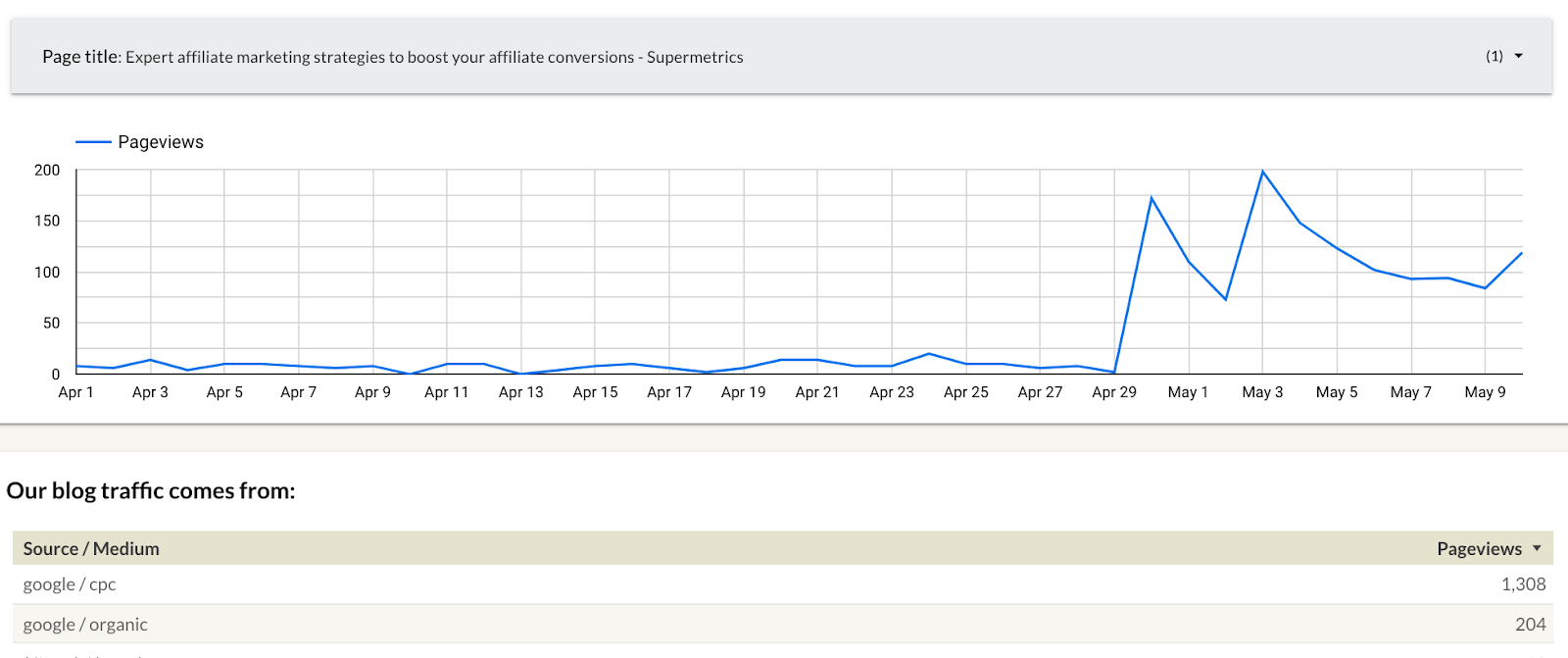
Source: Supermetrics Data Studio dashboard
The conclusion is that our partner landing page doesn’t need to provide any detailed information on affiliate or partner marketing. It can have a strong conversion-focus and simply introduce our program.
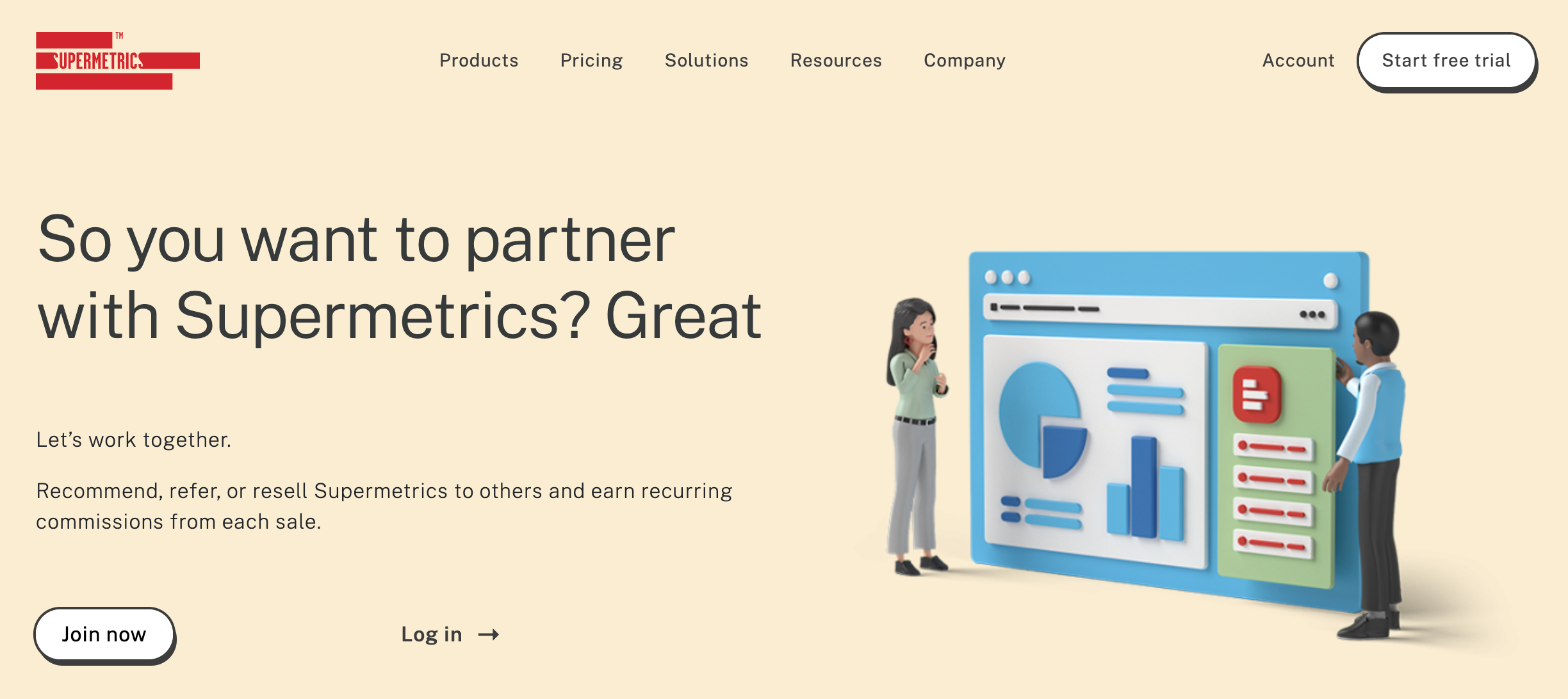
Source: Supermetrics partner landing page
We’ve placed a “Join now” CTA button at the very top of the page, accompanied by a benefit statement. By scrolling down, visitors find more detailed information such as a description of how the program works, who can join, what the benefits are, and so forth.
How do SEO and PPC impact one another
Before delving into the landing page experience in more detail, let’s look at how SEO and PPC impact one another.
As mentioned earlier, there’s no direct impact between the two. Even according to the most notable research on this topic by Google, 89% of the traffic generated by search ads is not replaced by organic traffic if the ads are paused. Based on this, one could conclude that search ads don’t cannibalize organic traffic.
But it’s worth noting that this research is from 2011 and 10 years is a lifetime in this field. Now, so many algorithm updates later, it could be almost water under the bridge.
This is what Google Ads has to say on the question whether PPC can help SEO efforts:
“Google’s first responsibility is to provide Search users with the most relevant possible results. If businesses were able to pay for higher rankings in the search results, users wouldn’t be getting the information they’re looking for.”
But even if Google is doing its best to keep SEO and PPC separate, it has no control over the indirect impact. There’s a lack of thorough research on the matter of what those indirect effects are. So, we have to rely on the collective experience of marketers. Moz, for example, has suggested that searchers who see an ad might be more likely to click an organic listing.
List of indirect effects between SEO and PPC
Here’s what I would include in the list of indirect effects that we can probably all agree on:
- PPC, coupled with SEO, allows you to occupy more SERP real estate
You get double exposure for your page. That’s undeniable. Whether seeing your ad result makes users more likely to click on your result in the organic listings is not so obvious.
- PPC increases brand awareness and sometimes drives organic sales
The part of your paid traffic that lands on your page but doesn’t convert at first can sometimes return and convert through organic search. Having landed on your page and being familiar with your brand can help them convert later. Especially if your paid campaigns promote a page that doesn’t rank well organically, it means you wouldn’t achieve such brand familiarity otherwise.
- PPC sometimes boosts organic ranking and impacts organic CTR for certain queries
Another benefit of the added brand exposure is that some users who land on your page through PPC can link to it, mention it, or interact with it elsewhere. This additional coverage and engagement can be on social media or another website and it can boost your organic rankings.
For certain queries where paid ads drive a substantial share of the clicks, having an optimized ad for that query can also impact the CTRs for the entire SERP, including the organic results.
- PPC lets you discover better keywords for organic search
Targeting the most relevant keywords is at the heart of your SEO and PPC strategies. But it takes much longer to get results for your organic search efforts. The immediate results of your paid campaigns, however, give you valuable keyword data to leverage in your SEO efforts.
Landing page experience: key factors and how to improve
Given that landing page experience measures how well your page serves its visitors, the relevance of your content is a key factor. But it’s not the only one. Here’s a list of factors that have a major impact on your landing page experience for both organic and paid traffic:
- Content relevance and quality
- Trustworthiness
- Site navigation and speed
- Mobile friendliness
Check your landing page experience on Google Ads
On Google Ads, you can check the landing page experience for each keyword. On the sidebar menu, choose “Search keywords” > “Quality score” and then tick the box for “Landing page exp.” and click the “Apply” button.

Source: Google Ads
Now, your keywords report should display a column for landing page experience for each keyword in your campaign. You can assess whether a better landing page experience correlates with a higher conversion rate.
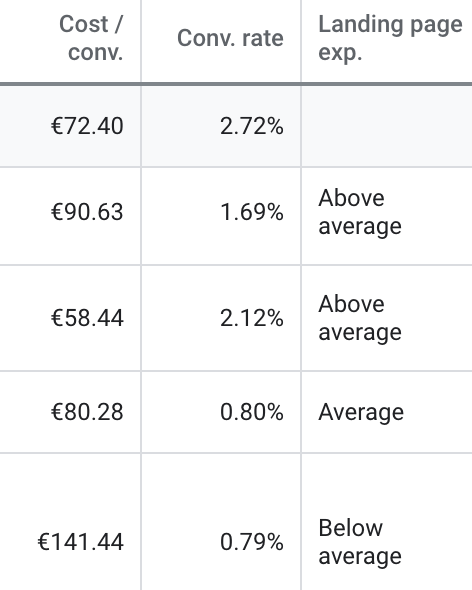
Source: Google Ads
A landing page that provides a poor user experience may show less often or in some cases not at all in the search results. And it’s even less likely to convert anyone if it doesn’t match the intent of your visitors.
How to improve your landing page experience
Here’s how you can improve the key factors affecting your landing page experience:
- Provide useful content that matches visitors’ intent
- Optimize for customers, not for conversions only
- Pay attention to page speed and navigation
- Invest in mobile experience
- Build trust signals
Let’s take a closer look at these strategies and their implementation.
Provide useful content that matches visitors’ intent
As already mentioned, landing pages for organic traffic are usually more detailed and cater to your visitors’ need to find information, whereas PPC landing pages can be more commercial and concise. So, to meet your visitors’ expectations, make the content on your landing page as specific as it needs to be.
One way to get an idea of how specific the information on your page should be is to look at the top queries to that landing page on Google Search Console.
Here, we have the top queries for the landing page of the Supermetrics affiliate program (now called partner program).
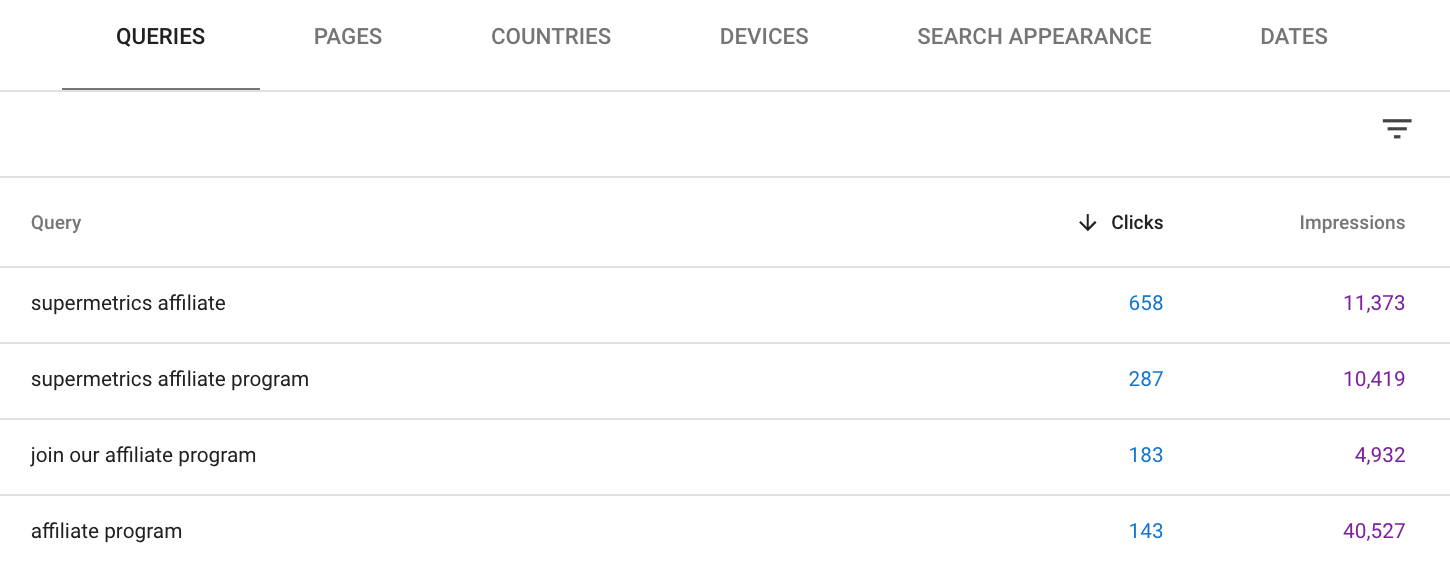
Source: Google Search Console
The first two queries imply that most visitors were looking for our affiliate program, specifically. While we also got clicks from more generic queries such as “affiliate program,” it’s obvious that most visitors expected information on our program, not on affiliate programs on a general level.
Useful and relevant content is a common requirement for all landing pages. While there are different opinions on page elements such as email capture pop-ups, a good rule of thumb is to dispose of everything that gets in the way of conversion. Anything not useful or not relevant to the intent of your targeted search queries has got to go.
Optimize for customers, not for conversions only
Even if the goal of your optimization efforts is to maximize conversions, don’t forget whom you’re optimizing your page for. Conversion itself is not the ultimate metric of marketing success. Because the quality of those conversions and the profit they bring matters more.
For example, some SaaS marketing teams could measure the success of their activities by the number of trials. But not all of those trial users end up converting into customers. Some of those customers also end up churning after their first purchase. And this might not have anything to do with the product. It could be due to the low quality of those trial users in the first place.
This is why landing pages should be optimized for the right customers, not for conversions only.
One example of controlling the quality of prospects by landing page optimization is to adjust the form fields. Instead of accepting all email addresses, you could pre-qualify your prospects by only accepting business emails.
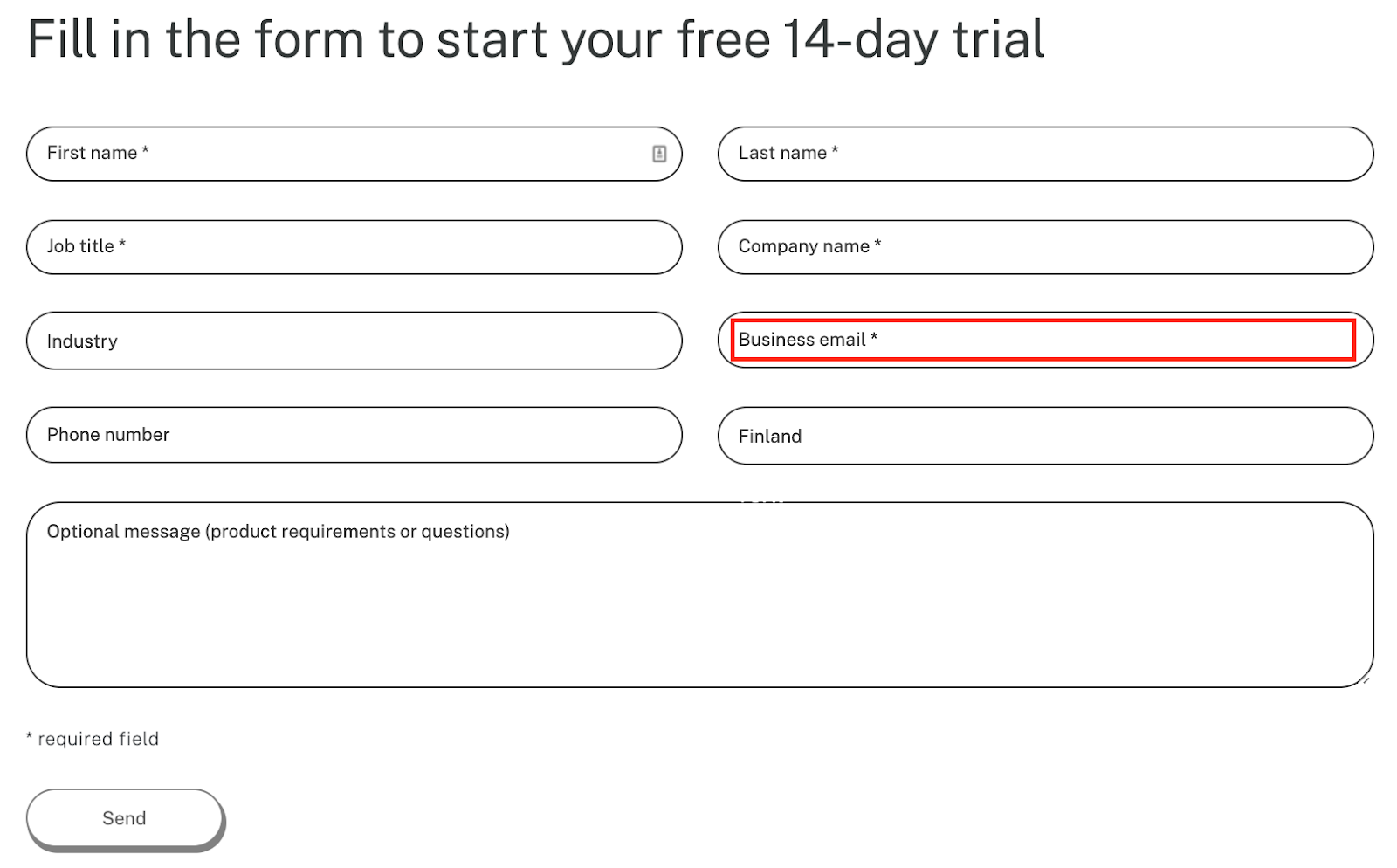
Source: Supermetrics for API trial form
The above image is a contact form on the Supermetrics website for those who want to start a free trial of our API product. Since most of our API clients are bigger agencies who need customized solutions, it makes sense for them to go through our sales team instead of the self-service funnel we have in place for other products. By only accepting business emails on the trial form, we can pre-qualify our prospects already in the trial stage.
Ahrefs, on the other hand, is a good example of going a step further by charging $ 7 for each 7-day trial of their SEO tool. This is an effective pre-qualifier that reduces trial abuse and eliminates those users who are not willing to pay for their product.
Optimizing for customers means that you need to place a summary of your USPs right at the top of your landing page, accompanied by a clear CTA. Users spend an average of only 54 seconds per page across industries, according to Contentsquare’s 2021 Digital Experience Benchmark report. So, it’s obvious that many of your visitors don’t even scroll down the page.
Pay attention to page speed and navigation
It’s been widely acknowledged already since 2018 that speed is a landing page factor for Google Search and Google Ads. More specifically, 53% of mobile site visitors abandon your page if it takes more than 3 seconds to load.
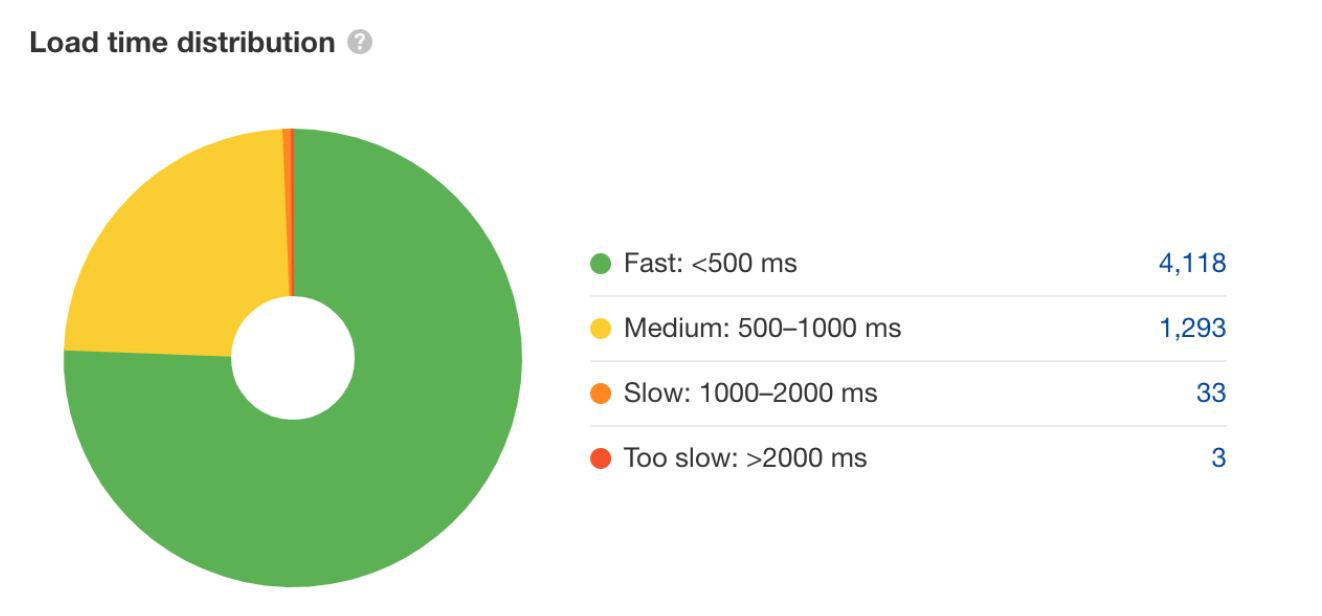
Source: Ahrefs Site Audit
If your page takes longer to load, there are a number of factors that you should consider. You can get started by inserting your website on Google’s PageSpeed Insights tool or use Pingdom’s Website Speed Test. These will give you valuable data about your current load speed for mobile and desktop and provide useful suggestions for improvement.

Source: PageSpeed Insights
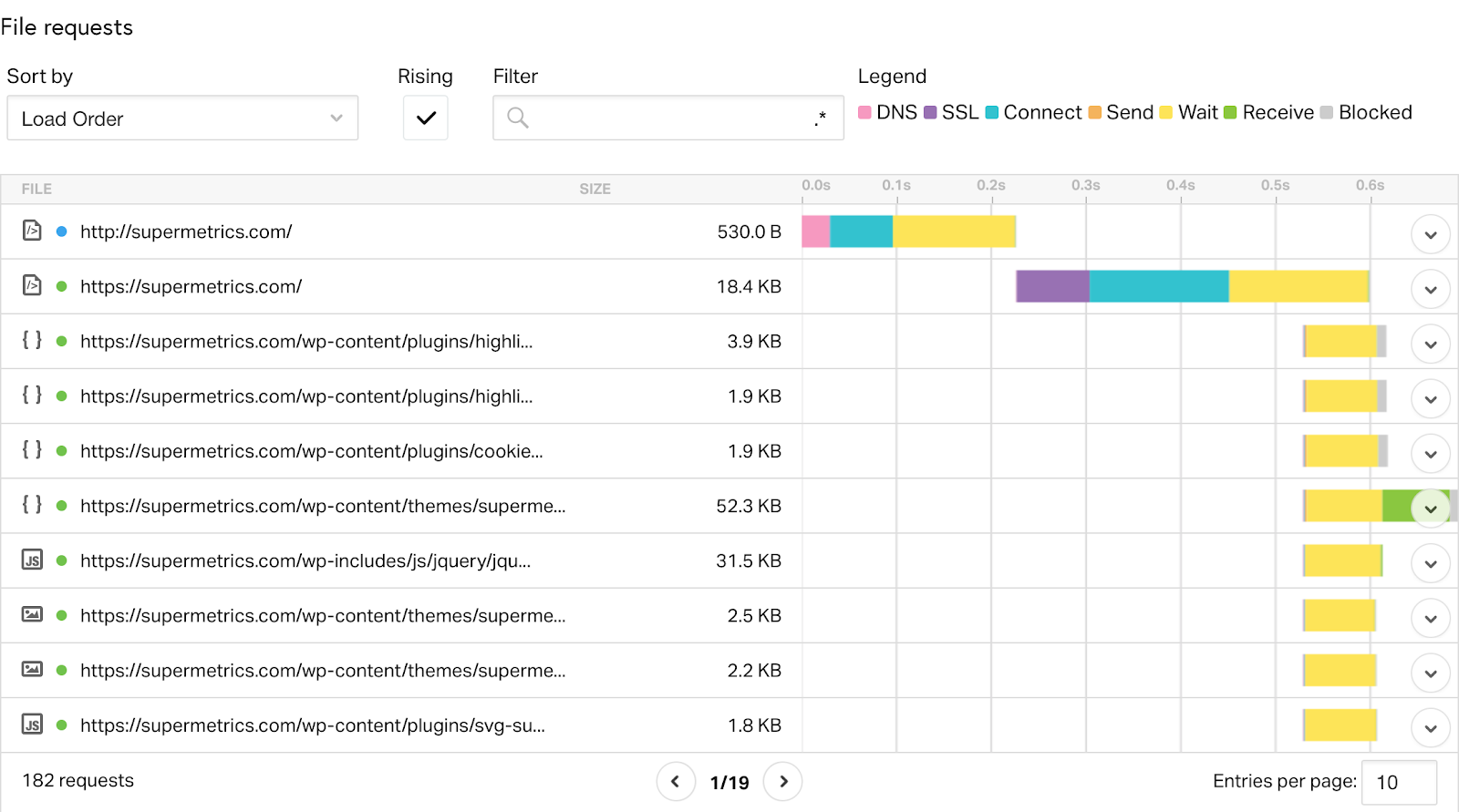
Source: Pingdom Website Speed Test
Page speed is a complex topic that requires its own research. To understand how you can improve page speed, it’s worth looking into how browsers construct pages in the first place. You will need to get familiar with waterfall charts like the one above that give a timeline representation of how different elements on your page are loaded into the visitor’s browser.
Common obstacles for faster page speed cover issues such as large media files (unoptimized images in particular), missing files, lack of caching, URL redirects, too many DNS lookups and HTTP requests, bulky code, and plugins with compatibility issues.
In your Google Analytics reports, you also have access to site speed metrics that can provide you with some insights:
- Average document interactive time
Average time the browser takes to give users the control to navigate, click and scroll the page. - Average document content loaded time
Average time the browser takes to parse the document. This can be a better metric if your page blocks a lot of user interactions until all scripts are loaded. - Average page load time
Average time the browser takes to download the page. This metric quits counting once all content has loaded.
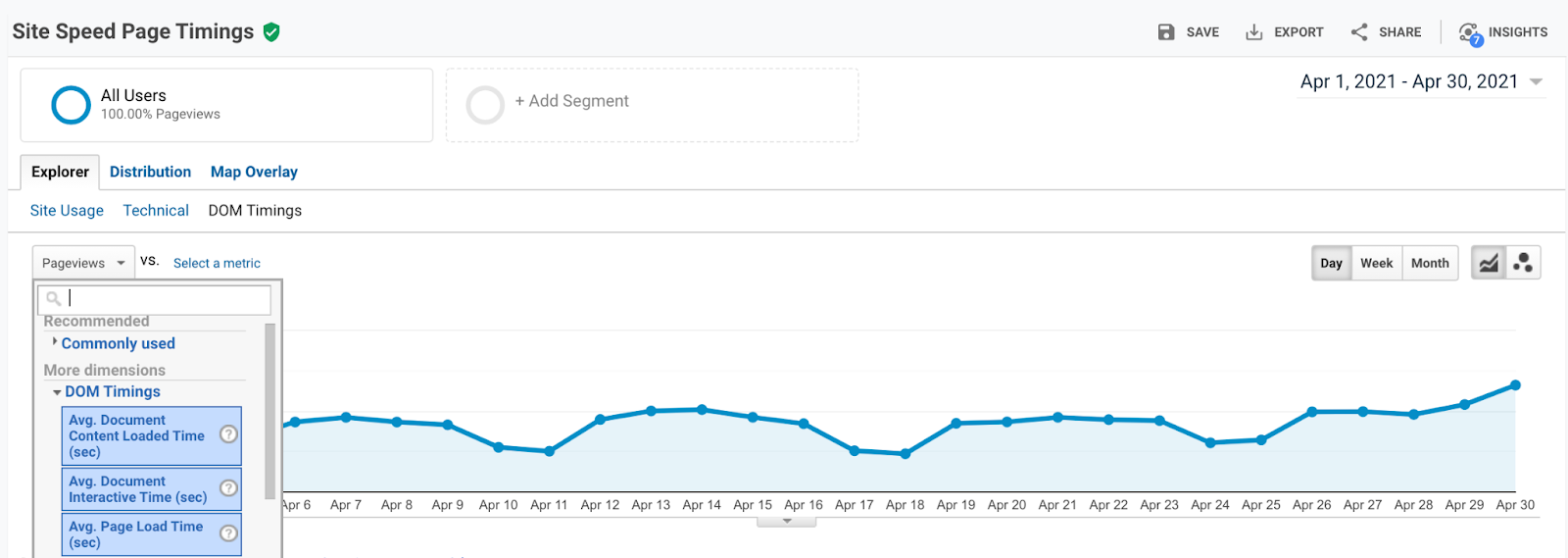
Source: Google Analytics
On top of page speed, the navigation of your site should be as streamlined as possible. So, don’t overwhelm your visitors with too many links but provide links that help both users and Googlebot navigate your site with ease. Internal links build contextual relevance and help establish a logical site hierarchy that improves the overall experience for all of your pages.
But for landing pages specifically, the goal is to persuade visitors to complete a specific action, for example a conversion. So, adding navigation links involves the risk of giving your visitors a chance to exit the page. For this reason, there’s actually a valid case against landing page navigation.
Invest in mobile experience
Closely related to the page speed requirement, it’s worth investing your time and effort in optimizing your landing page for mobile. But before testing how your page renders on mobile devices, you might want to check first how important mobile traffic is for your landing page.
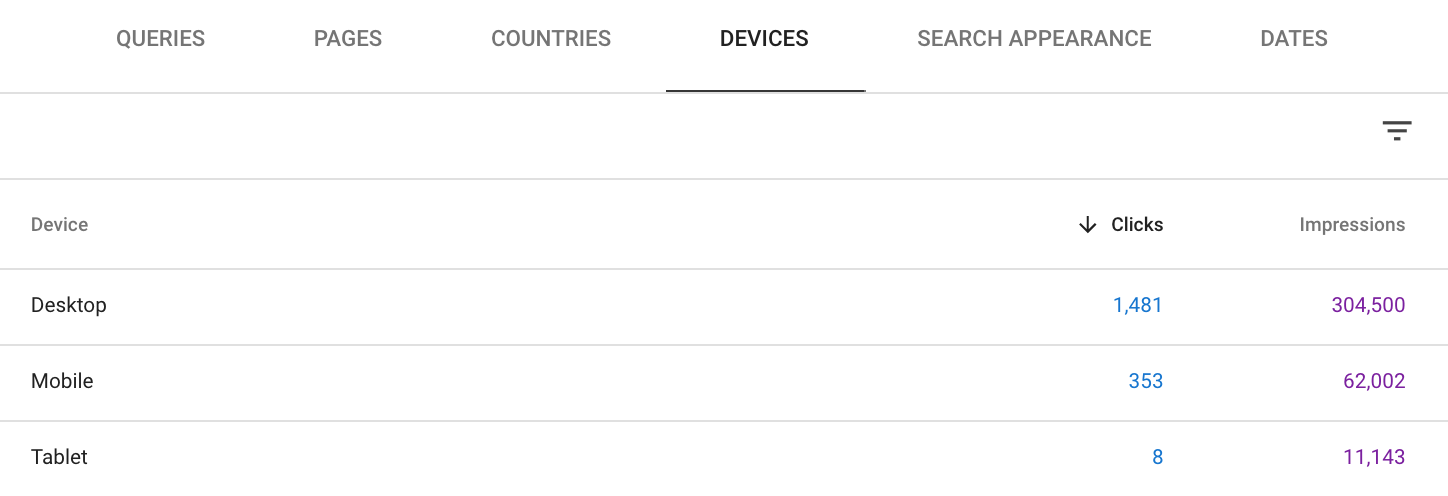
Source: Google Search Console
The image shows how many visitors who land on our page for Supermetrics partners come through mobile and tablet vs. desktop. Based on this click data, around 20% of our visitors use a mobile device or tablet. And that 20% of our traffic together with Google’s mobile-first indexing is enough of a reason to take mobile optimization seriously.
To make sure your page is easy to navigate on mobile, you can run the Mobile-Friendly Test.
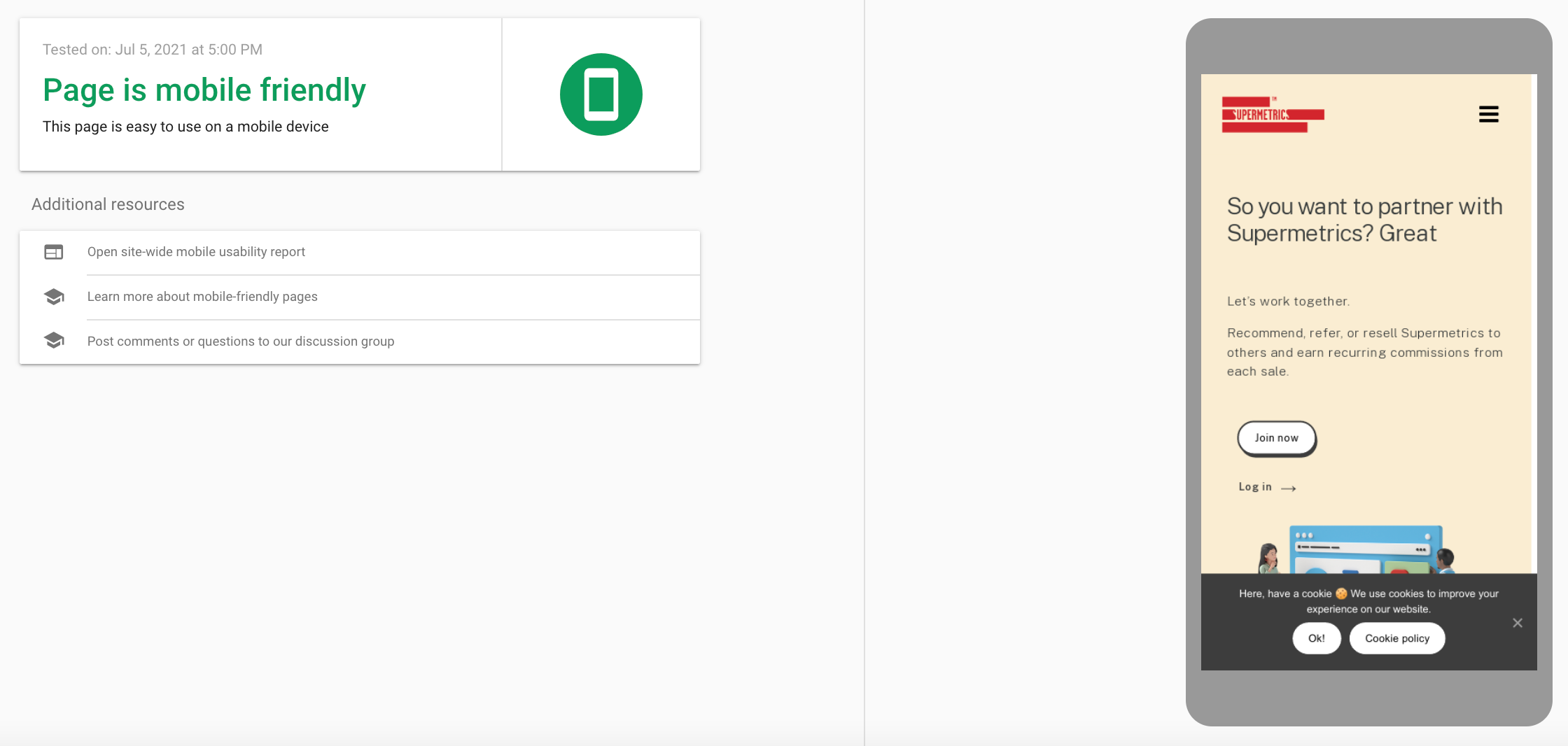
Source: Mobile-Friendly Test – Google Search Console
And to analyze the overall layout and check that nothing is broken or missing, you might want to preview how your page looks on mobile devices. On WordPress, you can easily switch between desktop, tablet, and mobile views when you open the preview menu.
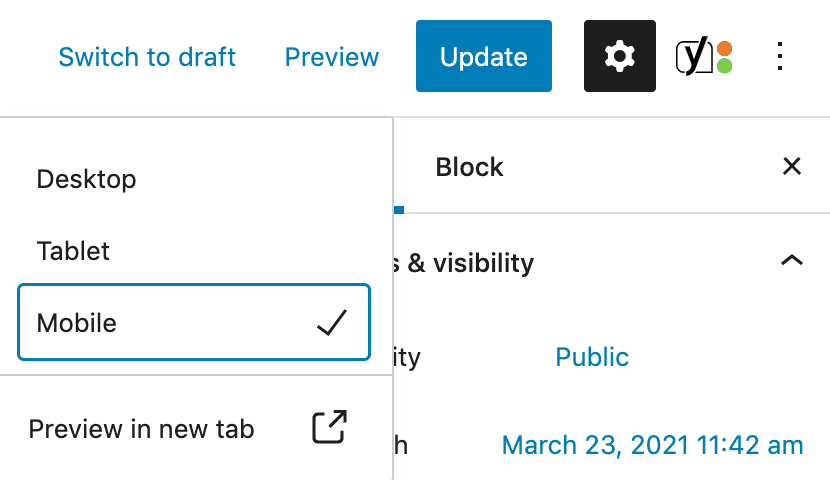
Source: WordPress
On your landing page, you could open developer tools on your browser to get a preview of your page on mobile. After you right-click on the page and select “Inspect,” your HTML source code opens up. Then, click the Toggle Device Toolbar button to change your view to mobile.
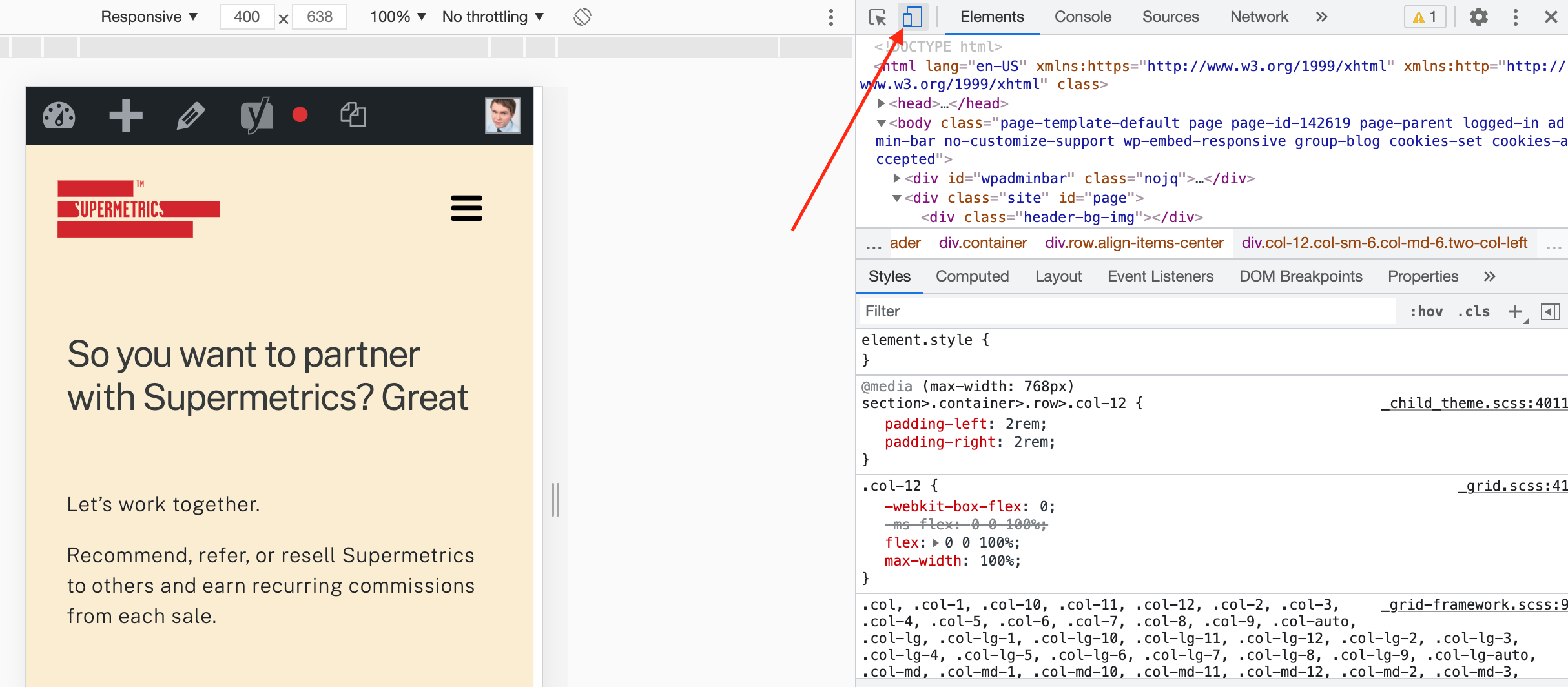
Source: Google Chrome Developer Tools
So, make sure your landing page is structured in a way that makes it easy to navigate and complete actions on its mobile version. And if you want to take it a step further, consider implementing AMP pages. These are lightweight pages that load faster and provide a smoother mobile experience for your visitors.
Build trust signals
Trust signals that improve your landing page experience include factors such as backlinks from respected referring domains, mentions, testimonials, reviews, privacy policy, data collection disclosure, SSL certificate, contact information, social media shares, affiliation with trusted websites, secure payment methods, Google My Business profile, and site navigation.
Some of these, for example disclosure and contact information, are more straightforward to build in the sense that you either have them or you don’t. And some like backlinks, mentions, testimonials, and reviews require a continuous effort and you can never have too many of them.
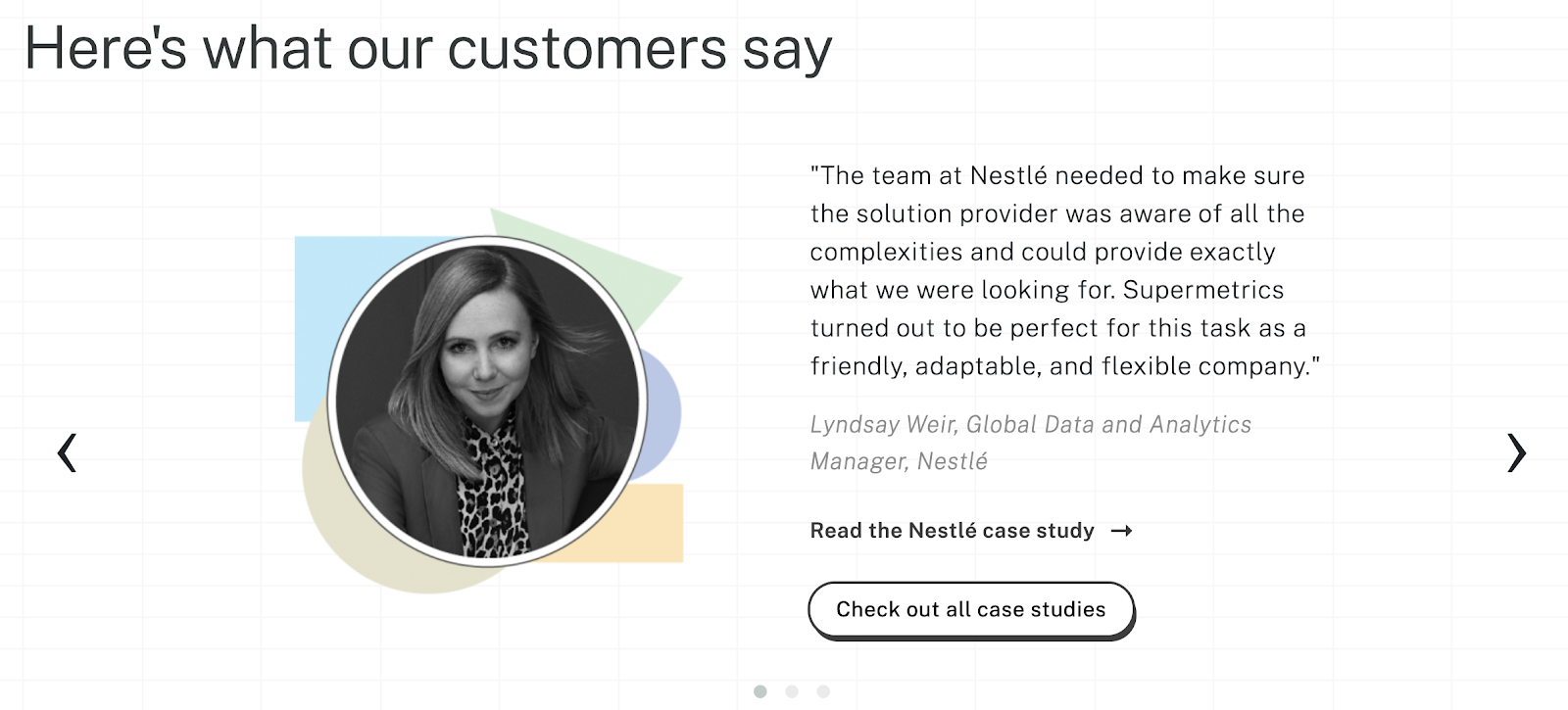
Source: Supermetrics
Ideally, of course, your product or content, or preferably both, are so good that people link to them, share them, and write about them organically, too. But you can also push it a little further by giving those people an incentive to give recommendations and link to your website. This is where affiliate, partner, and referral marketing come along.
And with link building partnerships, you can create an entire network around your content that will boost your backlink profile and improve your domain rating, which is a vital trust signal.
Final thoughts
Understanding the indirect effects between SEO and PPC makes it easier to map out the optimization of your landing page. Especially if your landing page serves both traffic sources, it’s important to streamline your page experience so that it meets all visitors’ expectations. Consider the obvious factors such as relevance, content quality, and ease of navigation and the factors that go beyond what’s on your page, for example speed and trust signals.
While implementing the strategies listed above demands time and effort, it will pay off in the long term. Visitors who find exactly what they’re looking for are far more likely to complete their actions on your landing page.
Digital & Social Articles on Business 2 Community
(46)
Report Post